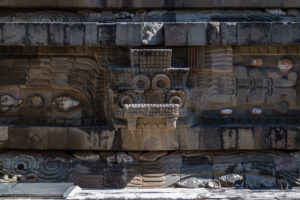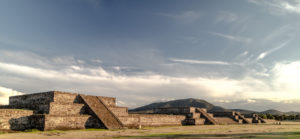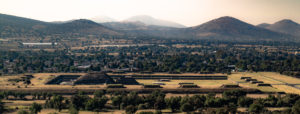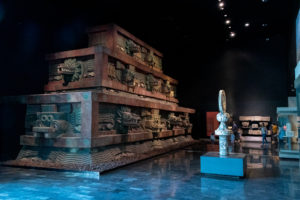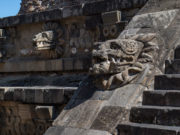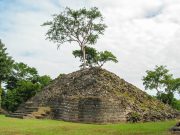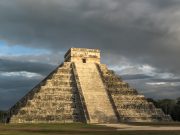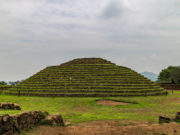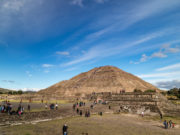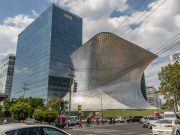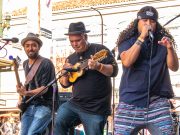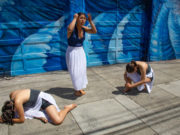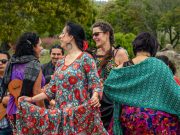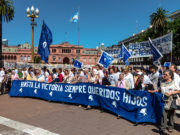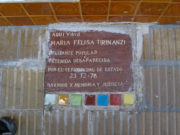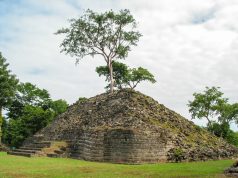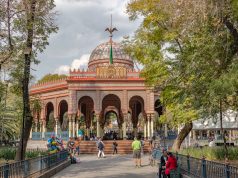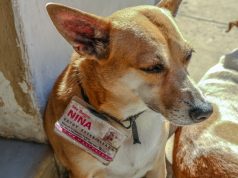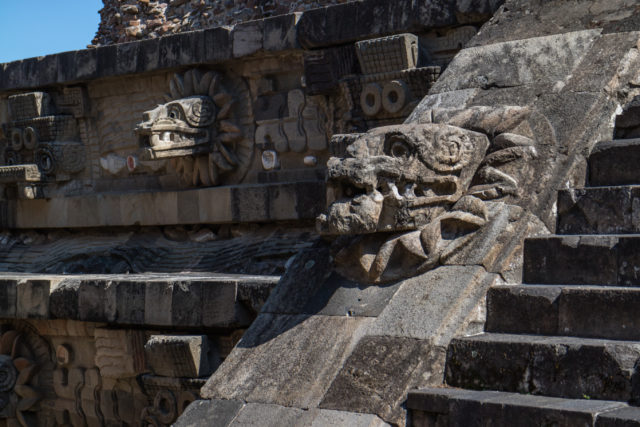
Because he’s one of my favorite gods, I particularly like the Quetzalcoatl Temple (Templo de Quetzalcoatl) at Teotihuacan, which is at the opposite end of the Calzada de los Muertos (Avenue of the Dead) from La Pyrámide de la Luna (the Temple of the Moon). A lot of people park up at the Luna end of the park and don’t bother to walk all the way to the Quetzalcoatl end. I think that’s a mistake.
The Quetzalcoatl temple sits in an enclosed plaza called La Ciudadela (the Citadel) because the conquistadors thought it looked like a little fort.
The main attraction for me is the temple itself, which sits at the back of the plaza, behind a smaller structure that’s built almost right up against the main temple. The main temple is thought to have been constructed between 150 and 200 A.D. It’s of the “slope and panel” style of construction and is ringed with elaborate, detailed masks of Tlaloc, the god of rain, and Quetzalcoatl, the feathered serpent who is the god of quite of few things, including knowledge and wisdom.
I think these are some of the best rendered faces of both of these dieties that you can see anywhere and they’re historically and archaeologically important enough that there’s a reproduced section of the pyramid in the National Museum of Anthropology in Mexico City.
The smaller structure in front, known as the “Adosada” platform, was built as the power structure of the city changed over the subsequent couple of hundred years, possibly usurping the importance of the main temple.
A powerful deluge of rain in October of 2003 opened a hole in the structure that led archaeologists to a 100-meter-long tunnel, lined with pyrite “constellations,” that runs under the two structures and leads to a large room beneath the structures. More than 100,000 objects have been discovered in that tunnel and the room. That newly-discovered underground area is not open to the public and likely never will be.
